
Bodhgaya, the land of Buddha’s Enlightenment
 At the age of 29, Siddharta Gautama, Prince of Kapilavastu, abandoned his material and worldly life to find the truth of existence. He went as a wandering hermit and in Bodhgaya, under a ficus tree, Siddharta Gautama became the ‘Buddha’, ‘the one who is awake’. Buddhism, or the philosophy of the middle way, thus began in Bodhgaya, in the state of Bihar. It now has more than 300 million followers from all over the world. Bodhgaya along with Kushinagar, Lumbini and Sarnath is one of the four holiest Buddhist pilgrimages.
At the age of 29, Siddharta Gautama, Prince of Kapilavastu, abandoned his material and worldly life to find the truth of existence. He went as a wandering hermit and in Bodhgaya, under a ficus tree, Siddharta Gautama became the ‘Buddha’, ‘the one who is awake’. Buddhism, or the philosophy of the middle way, thus began in Bodhgaya, in the state of Bihar. It now has more than 300 million followers from all over the world. Bodhgaya along with Kushinagar, Lumbini and Sarnath is one of the four holiest Buddhist pilgrimages.
Caves of Dungeshwari, the Buddha’s austerities
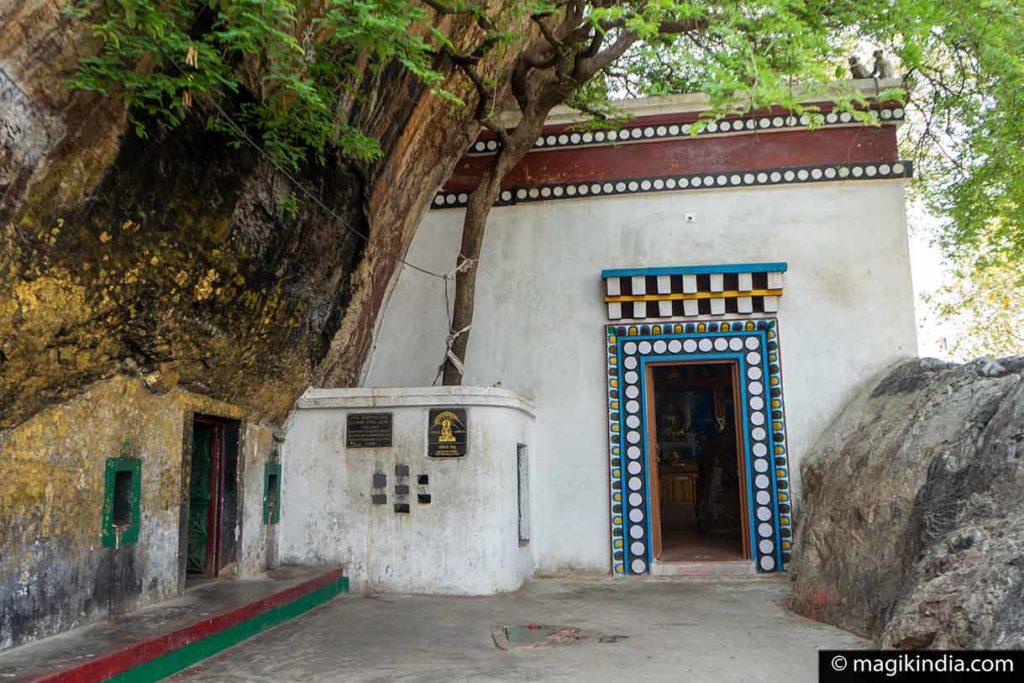
When Siddhartha Gautama left his kingdom, he shaved his head, clothed himself in humble garments, and, in his hermitage, he undertook severe austerities including food starvation and mortifications.
After 6 years, he realized that submitting his body to physical pain is not the way to get enlightenment but the way of Truth is that of the middle: “If you tighten the string too much, it will snap, and if you leave it too slack, it won’t play.”
It is believed that Buddha stayed in the caves of Dungeshwari (also called Mahakala caves) during his 6 years of austerities. They are situated 15 km from Bodhgaya. The pilgrims come from afar to enjoy the aura of that place.
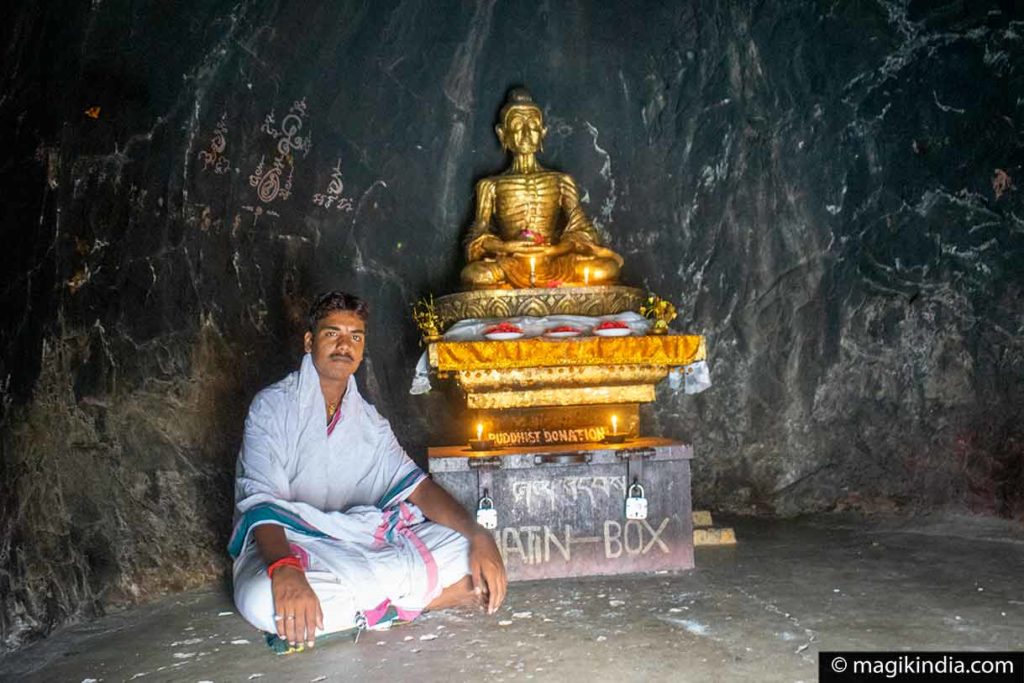
Sujata kuti stupa, the end of austerities
Choosing the middle way, Siddharta Gautama put an end to his 6 years of austerities by accepting kheer (rice pudding) from a young girl, named Sujata. In memory of this moment, an immense stupa (65 m in diameter) made of bricks was erected. It is located 3km from Bodhgaya.
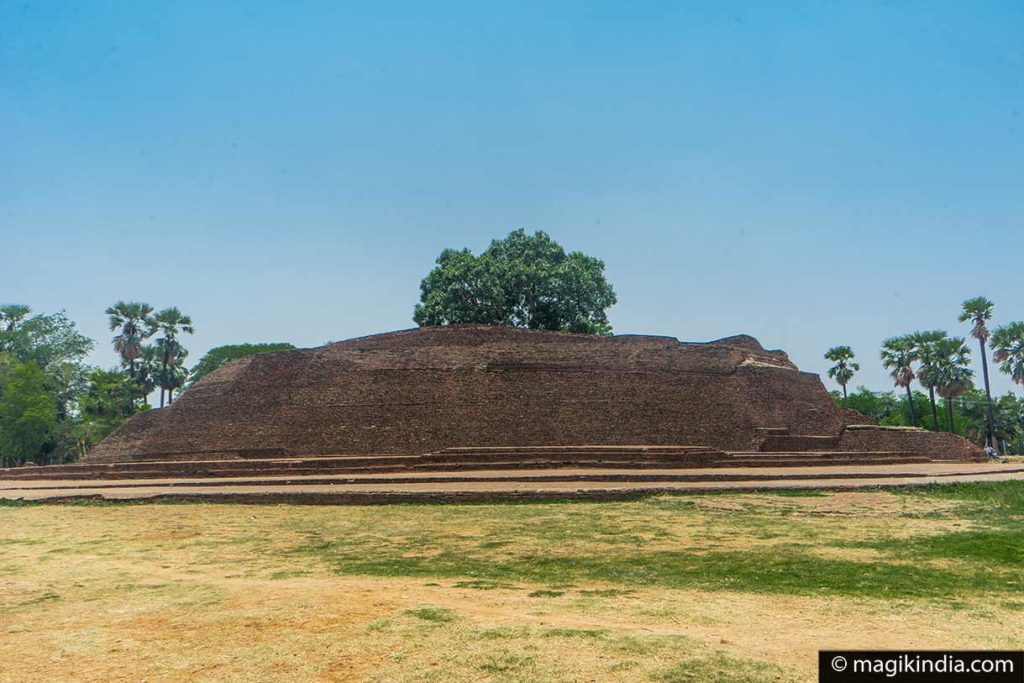
The stupa was built in three phases from the Gupta to the Pala Empires. Originally it was covered with lime and surrounded by a wooden railing. The excavations have uncovered many artifacts that are now on display at the Bodhgaya Museum of Archeology (see below).
The Bodhi tree, Buddha’s enlightenment
After the end of his penances, Siddharta Gautama continued his spiritual quest. One day, as he was walking, he sat down under a peepal tree (the Bodhi tree) and resolved not to get up from this place until he had found the enlightemnent. He remained in meditation for 49 days without moving, leading several battles against the demon Mara (the illusion). Then, on the night of the full moon of Wesak (May-June), at the age of 35, he became the ‘Buddha’, ‘the one who knows’.
Spiritual awakening or enlightenment is described as a state of bliss and deep wisdom and happiness. An enlightened person is not affected by the torments of life and treat each event of life with equanimity.

The Bodhi Tree is located in the Mahabodhi Temple Complex. It is surrounded by a railing and contains the Vajrasana (diamond throne), built in the 3rd century by Emperor Asoka, where the Buddha sat in meditation until his enlightenment.
The present tree is not the one where the Buddha meditated; The original tree was destroyed four times and has been replanted each time from a cut of the descendant of the original tree, which is currently growing in Sri Lanka.
In the 3rd century BC, a branch of the Bodhi tree was brought to Anuradhapura (Sri Lanka) by the daughter of Emperor Ashoka, Sanghamitta, where it was planted by the king of Sri Lanka, Devanampiya Tissa. This tree still exists today.
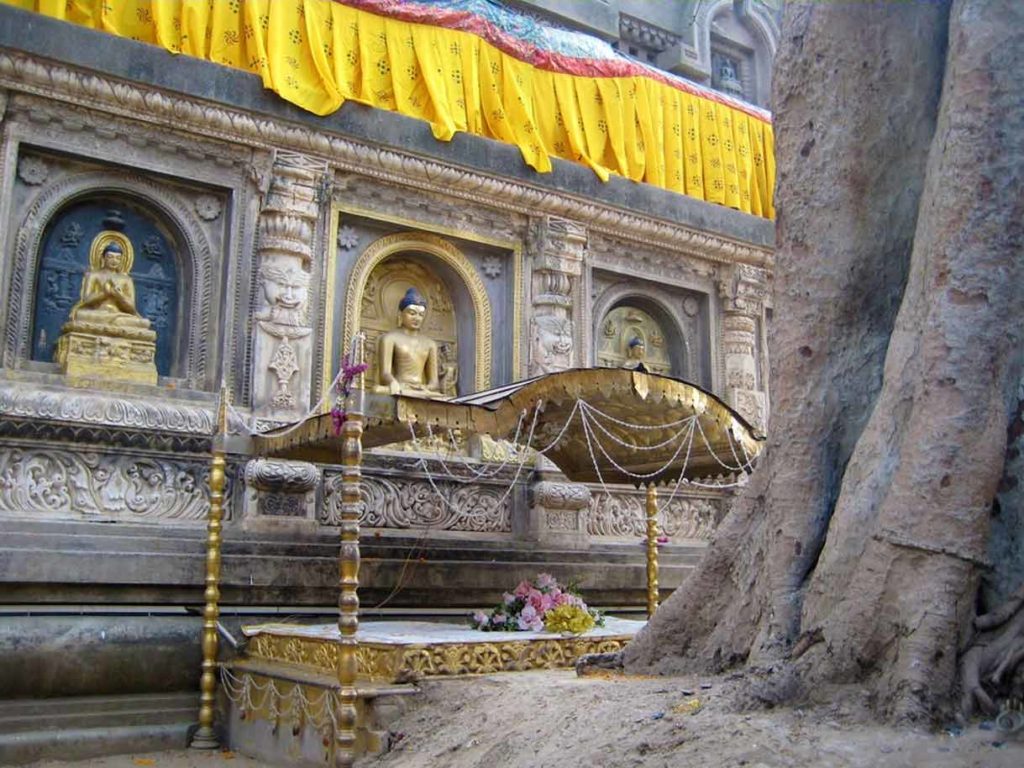
During the seven weeks following the enlightenment, the Buddha remained in meditation in various places around the Bodhi tree; These places are all situated in the temple complex.
For 1 more week Buddha remained in meditation under the Bodhi tree.
The second week, he stood and stared uninterruptedly at the Bodhi tree without blinking; This place is marked by a temple housing an image of the Buddha known as “Animisa Ceti” (Unblinking Shrine).

The third week, the Buddha practiced a walking meditation (back and forth walk from the Bodhi tree to the Animisa Ceti temple) called Cankamana. It is said that lotus flowers emerged at every step of the Buddha. To symbolize this story, an elevated structure with lotus flowers, known as ‘Ratanacankama Cetiya’ (jewel promenade shrine) was erected. One can also see right next to it, the original stones that once contained the lotus flowers created by Emperor Ashoka.

The 4th week, the Buddha meditated on the ‘Patthana’ or law of casuality in the ‘Ratanaghara’ (Jewel house shrine) northwest the Bodhi tree. It is said that a ray of six colors, blue, yellow, red, white and orange have emanated from his body during this deep meditation. These are the colors that are on the Buddhist flag.
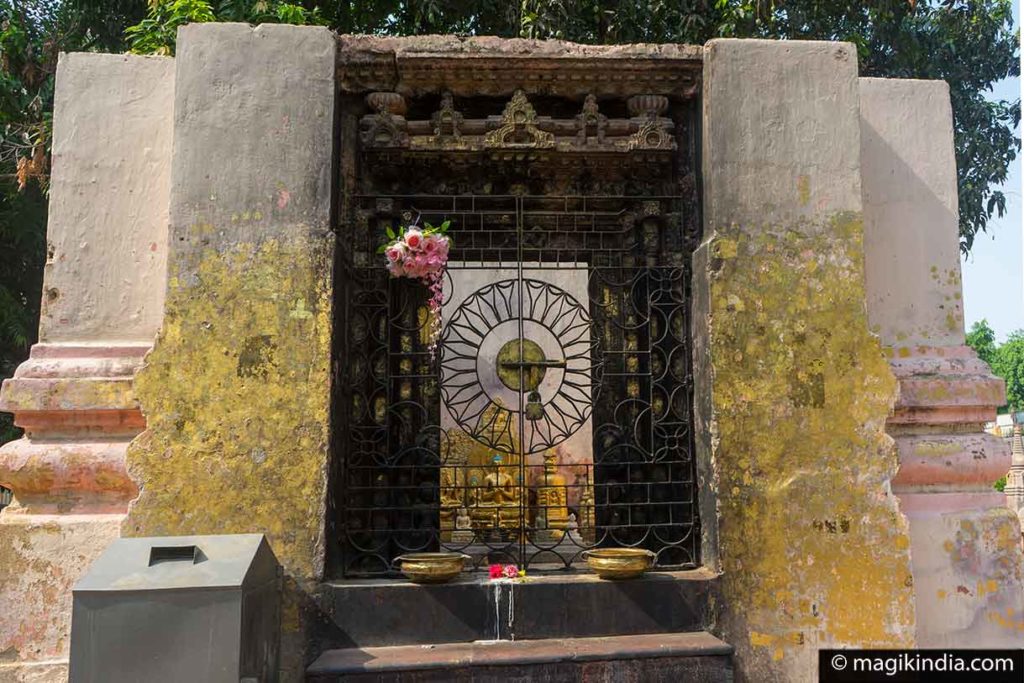
Near the entrance of the Mahabodhi temple, there is a pillar, which marks the place where the Buddha spent the 5th week in meditation under the Ajapala Nigrodha banyan tree. It is also here that he replied to a Brahmana that only by ones deeds one becomes a Brahmana, not by birth.
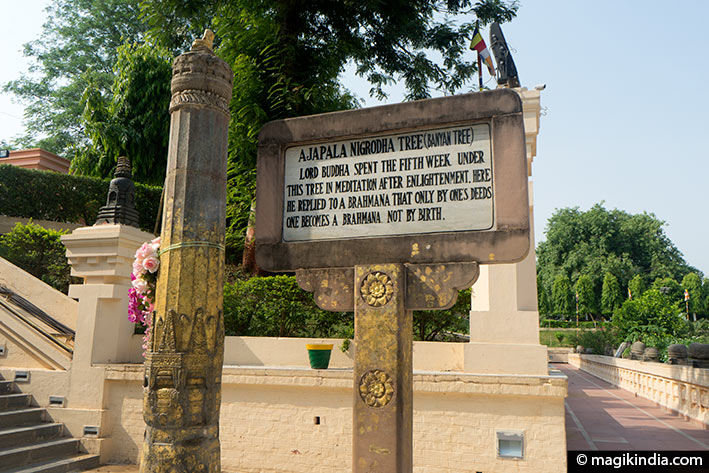
At the south-east of the temple is a pond (Muchalinda Sarovar) where Buddha spent the sixth week in meditation. While Buddha meditated, a violent storm broke out; The king of serpents named Muchalinda came out of his dwelling and stood up, protecting the Buddha with his hood. This anecdote is symbolized by an effigy of Buddha and Muchalinda situated in the middle of the pond; A gift from Burmese pilgrims.
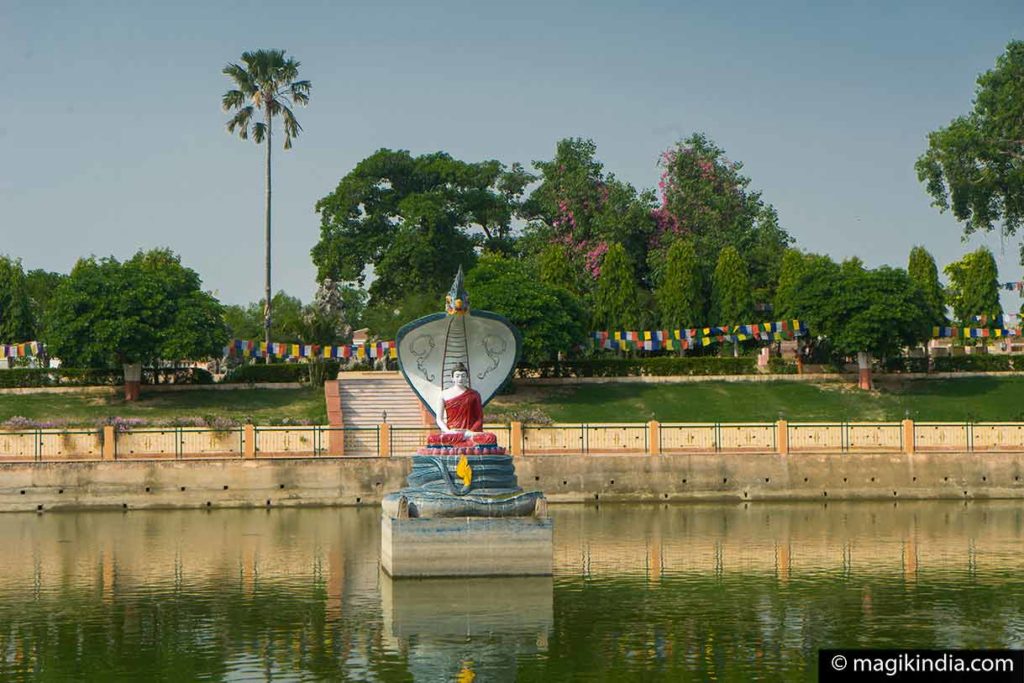
The Buddha spent the 7th and last week of meditation under the Rajayatna tree, situated at the south of the temple. It is said that two Burmese merchants named Tapassu and Bhallika came to offer rice cakes and honey to Buddha and became the first lay devotees of Buddha.

Mahabodhi Mahavihara temple
Adjacent to the Bodhi tree is the Mahabodhi Mahavihara Temple, also known as the ‘Great Stupa’. Around the 3rd century BC., 200 years after Buddha reached enlightenment, the Buddhist emperor Asoka visited the sacred site of Bodhgaya. He built the diamond throne (see above).
In the 2nd and 1st century BC., the stone railing around the Bodhi tree was donated by the Sunga rulers. A monastery and a stupa were also built. The present temple dates from the 5th century AC (Gupta period).
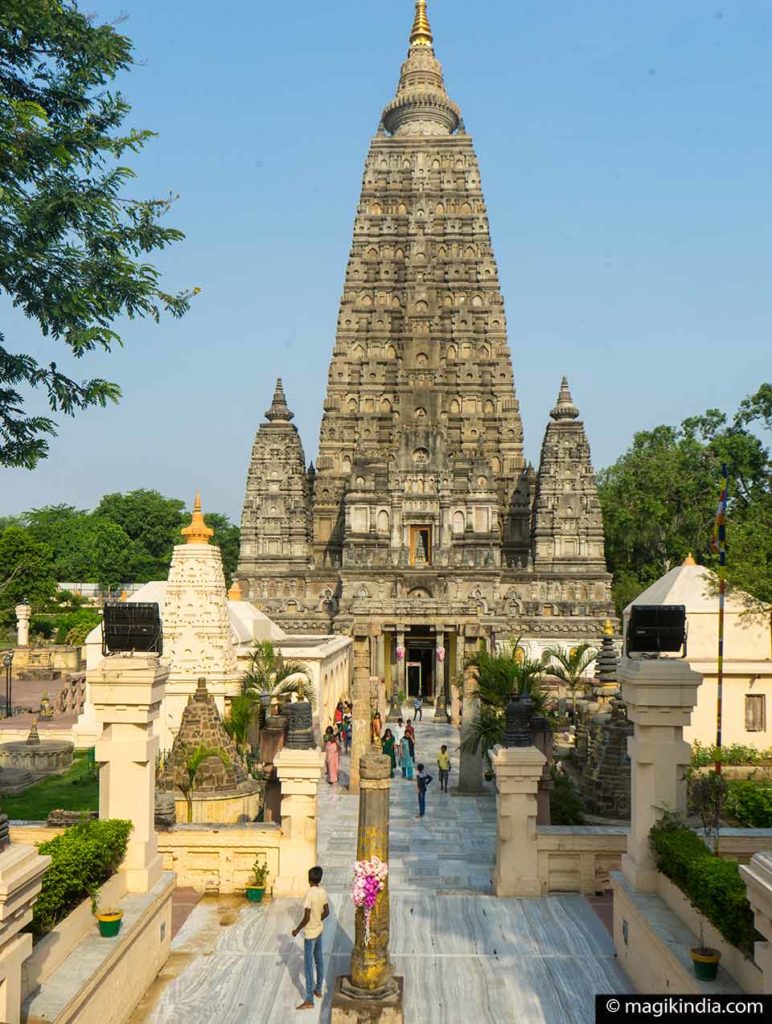
The temple was initially entirely built of brick, it is one of the surviving structures in India possessing this type of architecture. The central tower of the Mahabodhi temple is 55 meters high, surrounded by four small towers built in the same style. The temple is surrounded by a stone railing about two meters high. The original railing is now on display at the Bodhgaya Archaeological Museum (see below).
Inside the temple there is a large golden statue of the Shakyamuni Buddha (the enlighted Buddha). This effigy is believed to be more than 1700 years old.
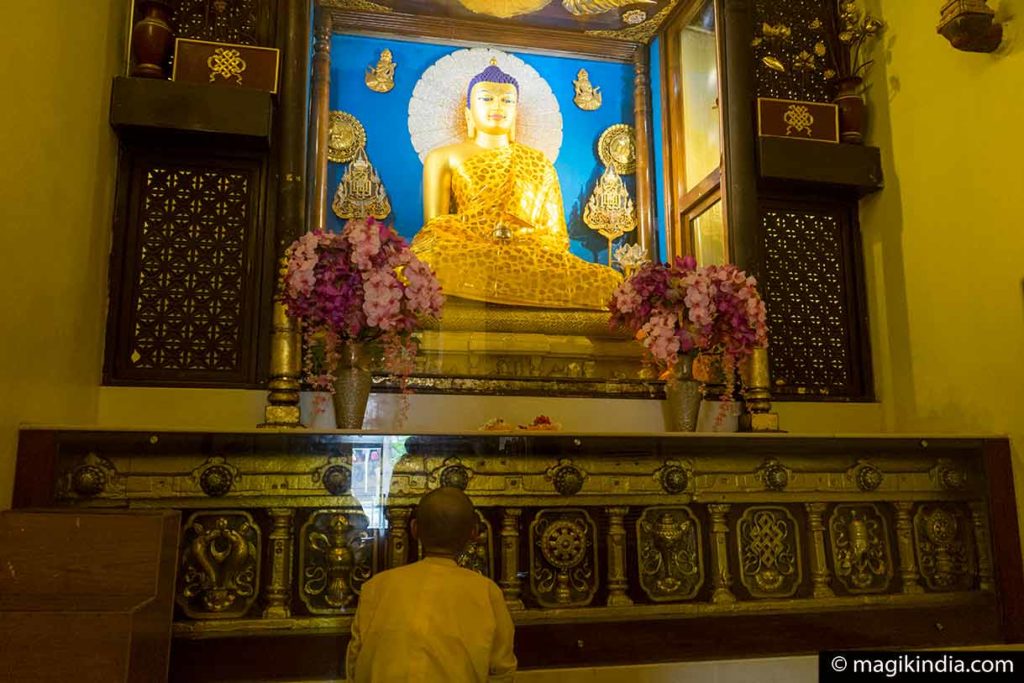
When Buddhism began to erode in India (from the 12th century onward), the temple fell into disuse. In the 19th century, the temple was in ruins. The Burmese Kings came to his rescue, followed by Sir Alexander Cunningham in 1880, an engineer of the British Army who was passionate about the history and archeology of India and founded what was to become the Archaeological Survey of India (organization for the archaeological researches and protection of the cultural heritage of India).

Bodhgaya Archaeological Museum
The Archeology Museum of Bodhgaya located near the Mahabodhi Temple was established in 1956 to preserve the artifacts found on the Bodhgaya temple site as well as on other sites such as the Sujata stupa (see above).
The museum contains remarkable sculptures of various forms of Buddha (Maitreya, Manjusri, Tara ..) dating from the Pala period (8th to 12th centuries) and some Hindu sculptures.
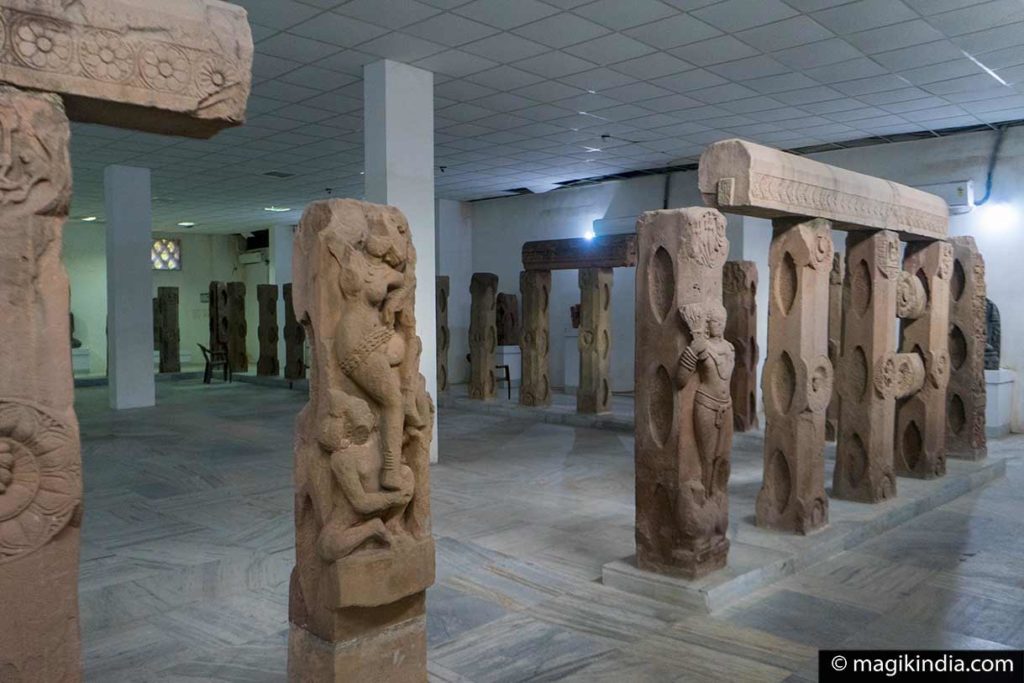
The main attraction is the original red sandstone and granite railing that surrounded the Mahabodhi temple. It dates from the Sunga empire (2nd-1st century BC) and the medieval period (6th and 7th century AD).
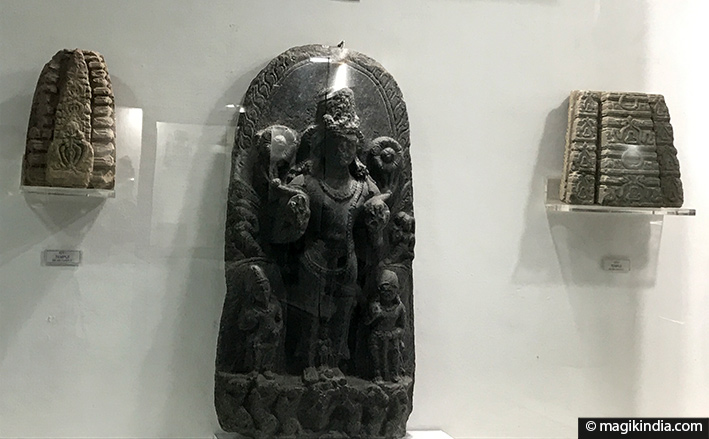
Monasteries in Bodhgaya
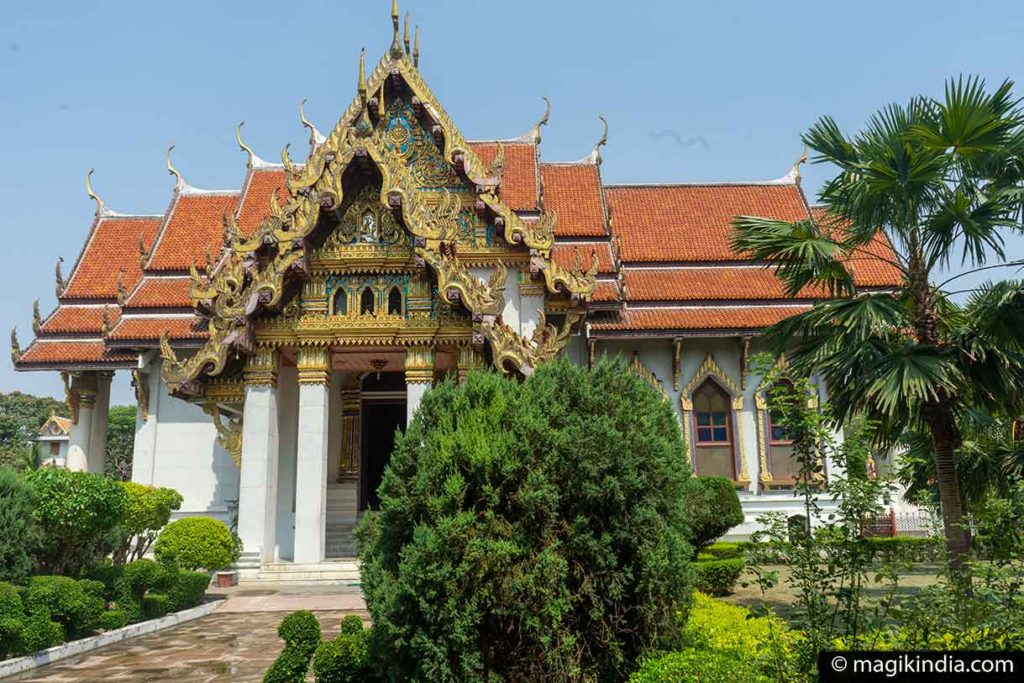
Around the Mahabodhi temple, several monasteries were built by Buddhist missions from different countries (Thailand, China, Bhutan, Japan ..). They reflect the diverse Buddhist cultures throughout the world.

The award of the best architecture goes undoubtedly to the Wai monastery (Thailand). It was built in 1957 by the King of Thailand to commemorate the 2500 years of Buddhism.
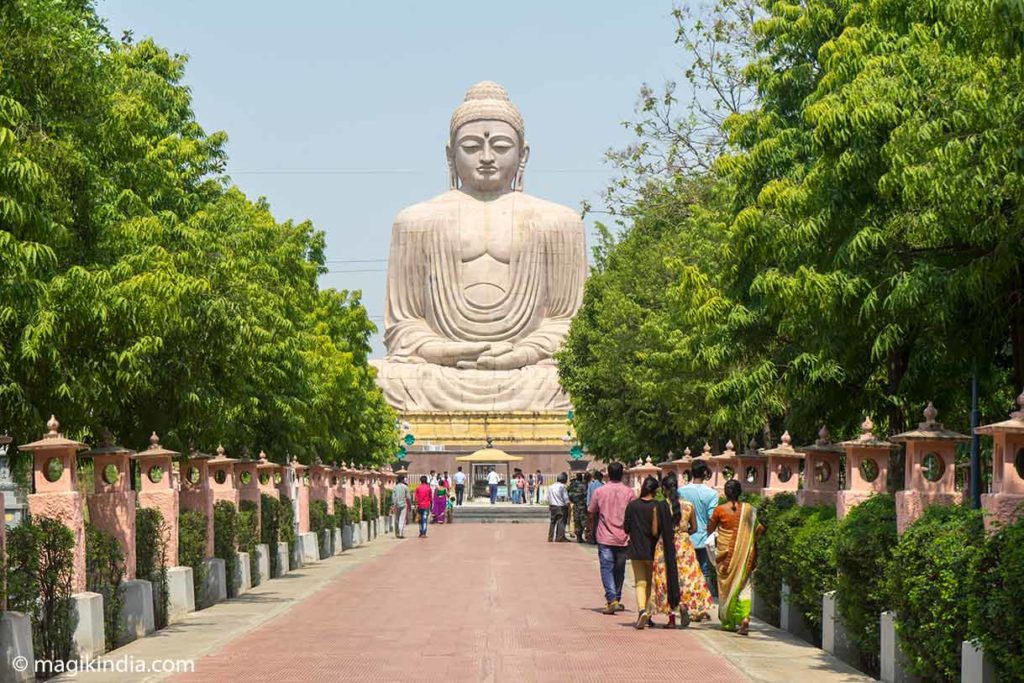
One of the other best attractions of Bodhgaya is the ’80 -feet Grand Buddha ‘inaugurated in 1989 by the Dalai Lama. The 25m high Buddha statue was designed in Japan according to a model created by an Indian artist from Calcutta; It is the largest statue of Buddha in India. Inside the statue, 20,000 small bronze Buddhas were placed in niches after being consacrated.
Vishnupad Temple | Sita kund | Mangala Gauri
In the town of Gaya, 15km from Bodhgaya, there is a famous Hindu temple dedicated to Vishnu on the banks of the Falgu River. The exact date of its construction is unknown but it was renovated by the Queen of Indore, Devi Ahilyabai in the 18th century.
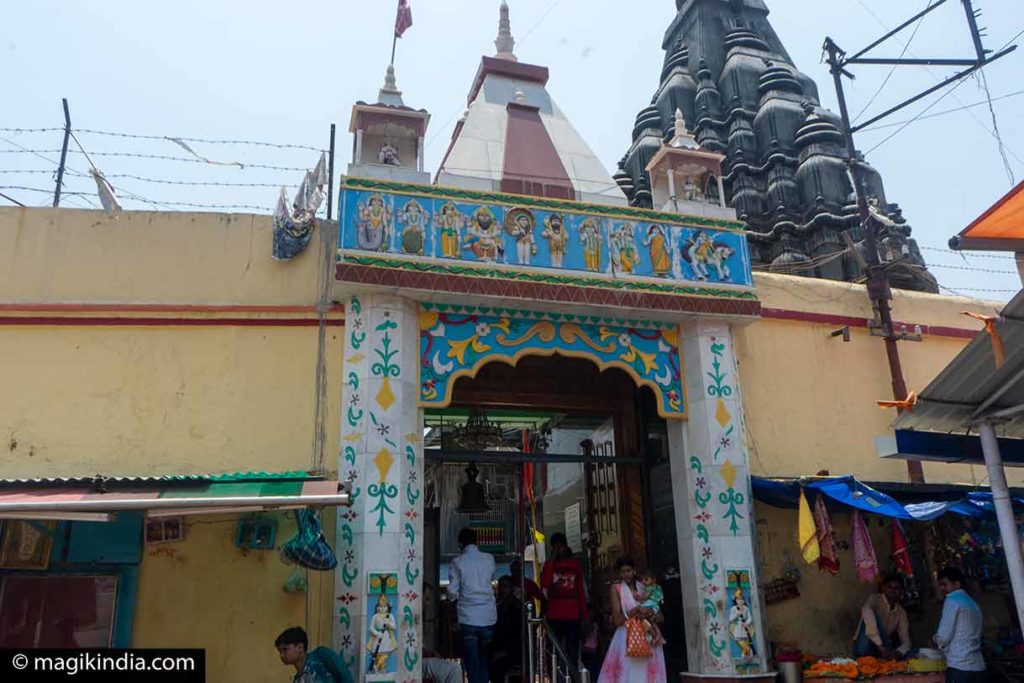
The temple was erected around the 40cm footprint of the god Vishnu engraved in a rock of basalt, known as Dharmasila. It is said that the footprint marks the place where Vishnu put his foot on the chest of the demon Gayasur to defeat him.
This sanctuary is a high center of pilgrimage not only for the Vishnouites but also for the Buddhists who consider that the footprint is that of Buddha.

The temple is not accessible to non-Hindus but the ghats (decks) of the temple where funeral rites (shraad) are performed are interesting to observe. Gaya is indeed one of four preferred places together with Varanasi, Allahabad and Haridwar to perform the rites believed to bring salvation to the departed souls.
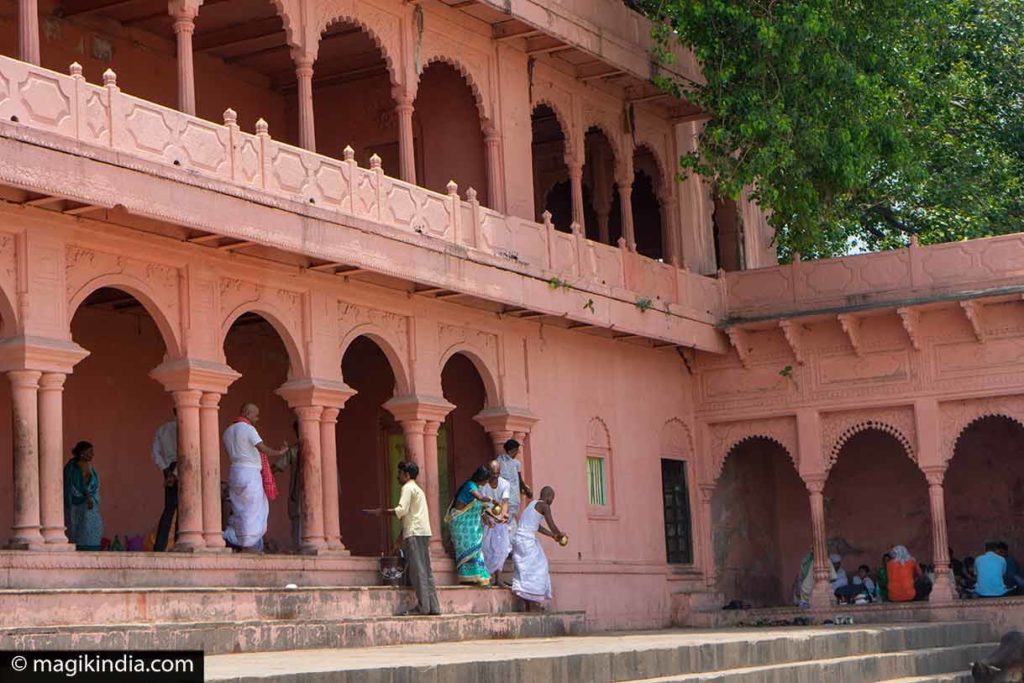
Opposite the Vishnupad temple, across the Falgu River, there is a set of temples called ‘Sita Kund’ dedicated to Sita, the spouse of Vishnu. It is said that the goddess performed ‘Shraadh’ for her father-in-law, Dasharatha, the King of Ayodhya.
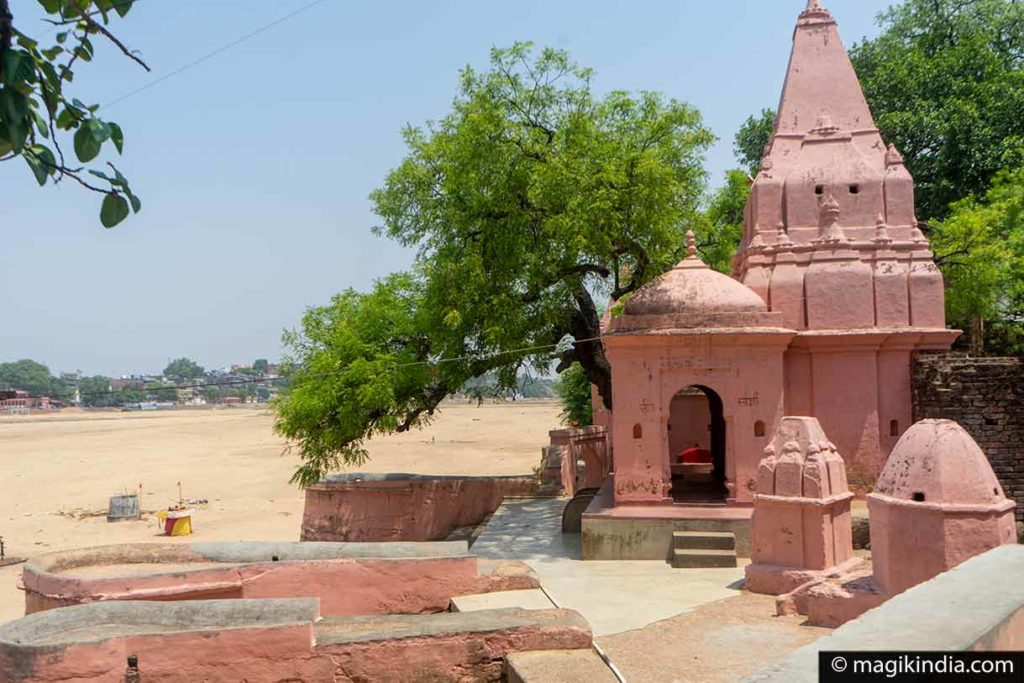
In the main temple, the tiny effigy of the goddess Sita is depicted offering Pind Daan balls (traditional hindu offerings for funeral rites) to the King Dasharatha who is symbolized by a hand emerging from the ground accepting the offering.

Situated close by the temple of Vishnupad, on the hill of Bhasmakoot, stands the temple of Mangala Gauri, another high place of pilgrimage. It is one of the 18 maha shakti-peeth. According to Hindu mythology, one of the breasts of the goddess Devi fell in this place.



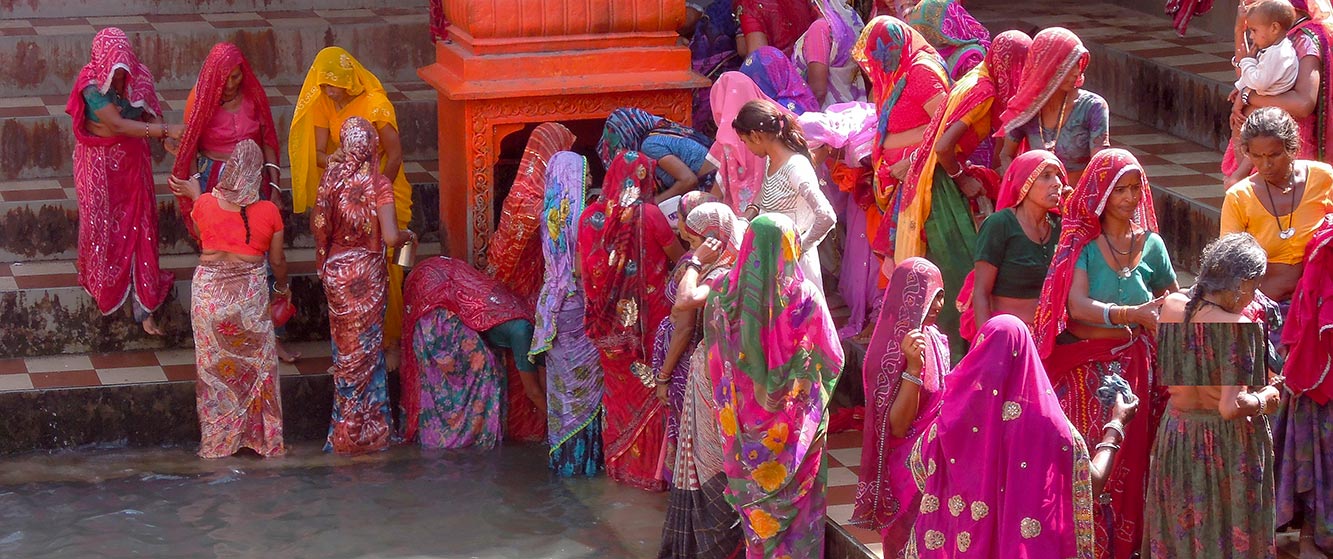
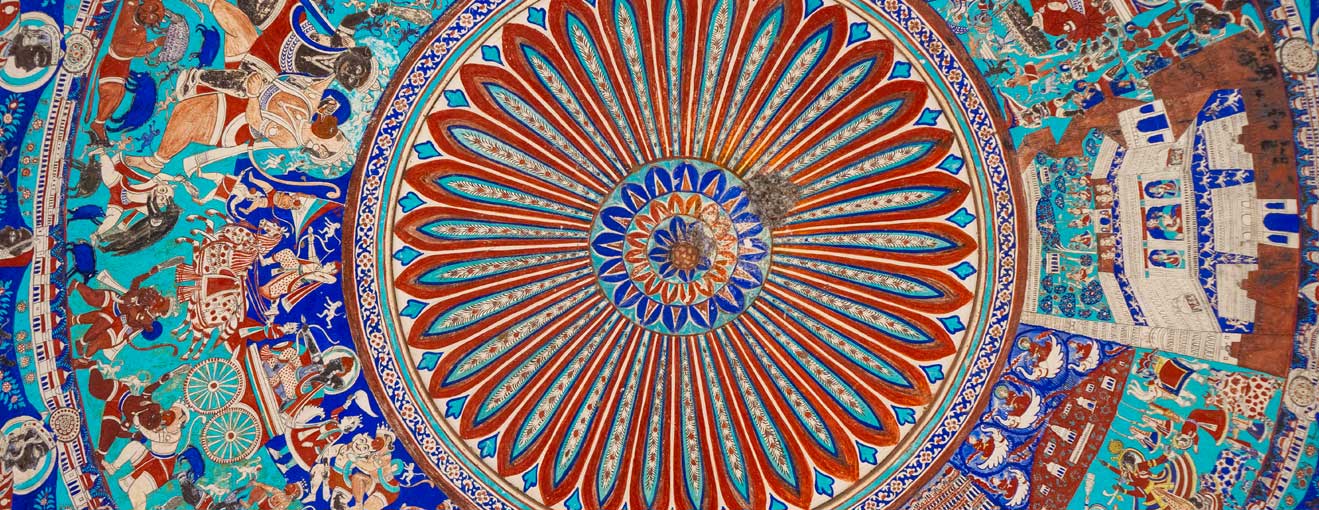


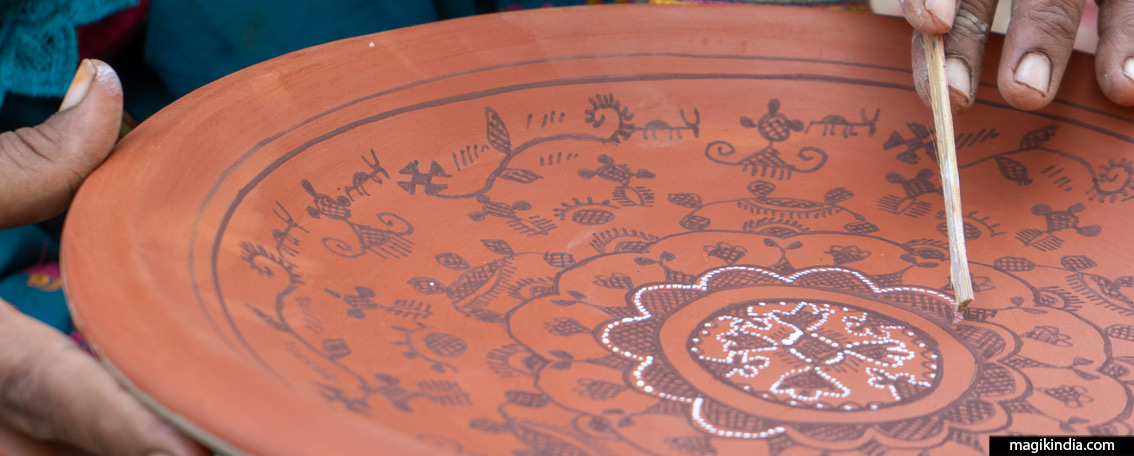
Awsome pics and wish i could go there
Tks Stuart! India is opening its border to overseas tourists again, so just take your buy flight ticket and come 😉 Regards, Mathini
Amazing! Thanks for sharing. LOVED IT!
Thanks Dr WANDA 🙂
I agree:I must visit Bodhgaya.
yes definitely 🙂
Such a great blog it is! You have written well informative with various beautiful lines. Very interesting. Thanks.
Thanks Bharat 🙂
I have heard maybe numerous times about Bodhgaya but never got a chance to visit there. After reading this article, I feel like I must go to India and visit this place once in my life. If I get that opportunity, I surely won’t miss it.
tks foor your review 🙂